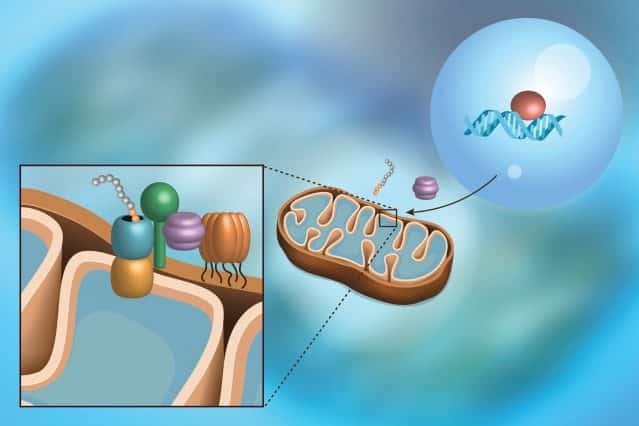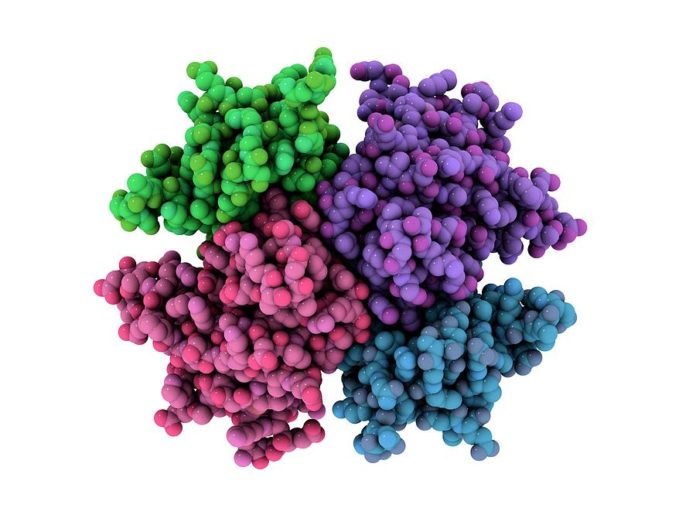Protein-Overwhelmed Mitochondria Resorts to MitoCPR
All mitochondrial functions rely on import of proteins into the organelle because the mitochondrial proteome is almost exclusively encoded by nuclear genes. Given the central importance of mitochondria for cell viability, it is not surprising that cells mount a nuclear response when mitochondrial functions are compromised.
These mitochondria-to-nucleus signaling pathways trigger the expression of mitochondrial chaperones when mitochondrial protein folding is defective, which in turn reduce translation and induce degradation of unimported proteins in the cytosol when mitochondrial import is impaired. Even though mitochondrial import is central to all mitochondrial functions, no response to protein import defects had been described that protects mitochondria during this stress.
To determine how cells respond to defects in mitochondrial protein import, scientists at MIT studied a yeast system which led to the discovery of mitoCPR, or the mitochondrial compromised protein import response.

“This is the first mechanism identified that surveils mitochondrial protein import, and helps mitochondria when they can’t get the proteins they need,” says Angelika Amon, the Kathleen and Curtis Marble Prof
essor of Cancer Research in the MIT Department of Biology, who is also a member of the Koch Institute for Integrative Cancer Research at MIT, a Howard Hughes Medical Institute Investigator, and senior author of the study. “Responses to mitochondrial stress have been established before, but this one specifically targets the surface of the mitochondria, clearing out the misfolded proteins that are stuck in the pores.”“We knew about various responses to mitochondrial stress, but no one had described a response to protein import defects that specifically protected the mitochondria, and that’s exactly what mitoCPR does,” Weidberg says. “We wanted to know how the cell reacts to these problems, so we set out to overload the import machinery, causing many proteins to rush into the mitochondrion at the same time and clog the pores, triggering a cellular response.”
“What makes our cells absolutely dependent on mitochondria is one of those million-dollar questions in cell biology,” says Vlad Denic, professor of molecular and cellular biology at Harvard University. “This study reveals an interesting flip-side to that question: When you make mitochondrial life artificially tough, are they programmed to say ‘help us’ so the host cell comes to their rescue? The possible ramifications of such work in terms of human development and disease could be very impressive.”
Scientists found that the protein that starts mitoCPR — the interpretation factor Pdr3 — ties to DNA inside the core, prompting the statement of a quality known as CIS1. The resultant Cis1 protein ties to the channel at the surface of the mitochondrion, and enrolls yet another protein, the AAA+ adenosine triphosphatase Msp1, to help clear unimported proteins from the mitochondrial surface and intercede their corruption. In spite of the fact that the MDR reaction pathway contrasts from that of mitoCPR, both depend on Pdr3 enactment. Truth be told, mitoCPR requires it.
Amon said, “Whether the two pathways interact with one another is a very interesting question. The mitochondria make a lot of biosynthetic molecules, and blocking that function by messing with protein import could lead to the accumulation of intermediate metabolites. These can be toxic to the cell, so you could imagine that activating the MDR response might pump out harmful intermediates.”
“It’s also yet to be determined whether an analogous pathway exists in more complex organisms, although there is some evidence that the mitochondria do communicate with the nucleus in other eukaryotes besides yeast.” Amon concludes.






























